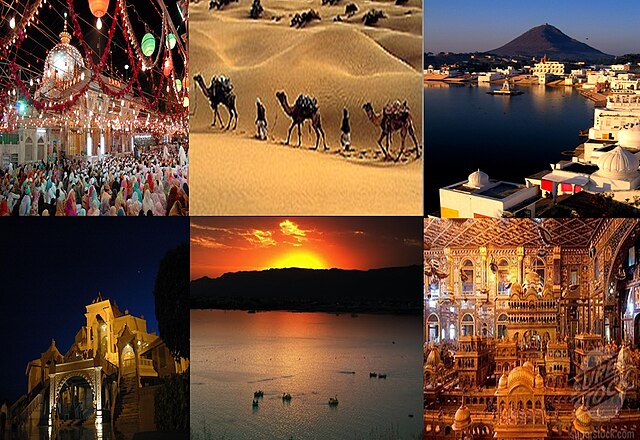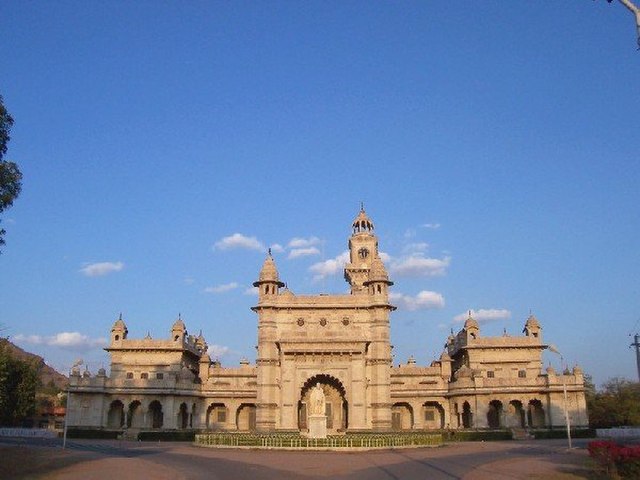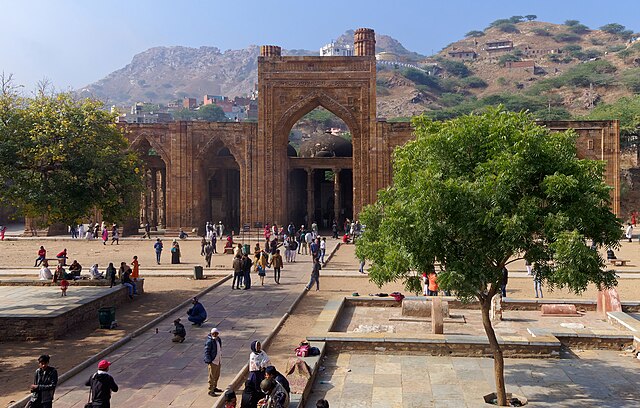Nestled in the heart of Rajasthan, Ajmer stands as one of India’s most revered pilgrimage destinations. But beyond its spiritual significance lies a fascinating climate story that shapes the daily lives of millions and influences tourism patterns throughout the year. Have you ever wondered what makes Ajmer’s weather so unique? Let’s dive deep into the meteorological mysteries of this desert city.
Understanding Ajmer’s Geographic Location and Climate Zone
Ajmer sits pretty at 26.45°N latitude and 74.64°E longitude, positioned strategically in the Thar Desert region of Rajasthan. This geographical placement puts the city squarely in the hot semi-arid climate zone, which explains its distinctive weather patterns. The city’s elevation of approximately 486 meters above sea level provides some relief from the extreme desert conditions, but don’t expect it to be a hill station!
The Aravalli Range, running close to Ajmer, plays a crucial role in shaping local weather patterns. These ancient mountains act like a natural barrier, influencing wind patterns and creating microclimates that make Ajmer’s weather somewhat different from other parts of the Thar Desert. It’s like having a natural air conditioner that works part-time – helpful, but not always reliable.
The Four Distinct Seasons of Ajmer

Unlike many places that experience subtle seasonal transitions, Ajmer’s weather changes are dramatic and well-defined. Each season brings its own personality, challenges, and beauty to this historic city.
Summer in Ajmer: Surviving the Desert Heat
Summer in Ajmer isn’t for the faint-hearted. Starting from April and stretching until June, this season transforms the city into a furnace. Temperatures soar to scorching heights, often touching 45°C (113°F) or even higher during peak summer days. The sun becomes an unforgiving master, ruling the sky from dawn to dusk.
During these months, the city experiences what locals call “loo” – hot, dry winds that sweep across the desert landscape, carrying with them dust and an intensity that can be overwhelming for newcomers. The heat is so intense that even the stones seem to radiate warmth, and the famous Ajmer Sharif Dargah sees fewer pilgrims during daylight hours, with most visits happening in the cooler evening times.
Monsoon Magic: When the Desert Blooms
The arrival of monsoon in Ajmer, typically around late June or early July, is nothing short of miraculous. After months of relentless heat, the first drops of rain are celebrated like a festival. The monsoon season, lasting until September, brings life back to the parched landscape.
Ajmer receives moderate rainfall during this period, with the average annual precipitation hovering around 550mm. The rains aren’t consistently heavy like in coastal regions, but they’re sufficient to rejuvenate the desert flora and fill the famous Ana Sagar Lake. The temperature drops significantly, making the weather much more pleasant, though humidity levels rise.
Winter Wonderland: Ajmer’s Most Pleasant Season
If Ajmer has a golden period, it’s definitely winter. From November to February, the city transforms into a comfortable haven with pleasant days and cool nights. Daytime temperatures range from 20°C to 25°C (68°F to 77°F), while nights can get quite chilly, sometimes dropping to 5°C (41°F) or lower.
This is when Ajmer truly shines. The clear skies, gentle sunshine, and cool breezes make it perfect for exploring the city’s numerous attractions. The Ana Sagar Lake looks pristine, the Ajmer Sharif Dargah sees maximum pilgrims, and even locals seem more cheerful as they shed their summer survival mode.
Post-Monsoon Period: The Transitional Beauty
The post-monsoon period, primarily October, serves as a beautiful transition from the wet season to winter. The landscape is still green from the recent rains, temperatures are moderate, and there’s a freshness in the air that’s absolutely delightful. This brief period often gets overlooked, but it’s actually one of the best times to experience Ajmer’s natural beauty.
Monthly Weather Breakdown for Ajmer
Understanding month-by-month weather patterns can help you plan better, whether you’re a tourist or considering relocating to this historic city.
January to March: Cool and Comfortable
January starts with crisp mornings and pleasant afternoons. It’s the coolest month, with temperatures ranging from 8°C to 22°C. February begins the gradual warming trend, while March marks the transition toward summer with temperatures reaching up to 30°C. These months are characterized by clear skies, minimal rainfall, and excellent visibility.
April to June: Rising Heat and Preparation
April signals the beginning of summer’s approach, with temperatures climbing to 35°C. May and June are the hottest months, with maximum temperatures often exceeding 42°C. The heat becomes increasingly dry and intense, with minimal cloud cover and virtually no rainfall. These months test the endurance of both residents and visitors.
July to September: Monsoon Arrival
July marks the monsoon’s arrival, bringing relief from the summer heat. Temperatures drop to more manageable levels of 25°C to 35°C, but humidity increases significantly. August typically sees the maximum rainfall, while September begins the monsoon’s retreat with intermittent showers and clearing skies.
October to December: Perfect Weather Returns
October offers post-monsoon freshness with moderate temperatures and clear skies. November and December bring the most pleasant weather, with perfect conditions for outdoor activities and sightseeing. December can get quite cold, especially during nights, making it ideal for those who prefer cooler climates.
Temperature Patterns and Extremes

Ajmer’s temperature patterns follow a predictable cycle, but the extremes can be surprising. The city has recorded temperatures as high as 48°C during peak summer and as low as 2°C during harsh winter nights. The diurnal temperature variation is quite significant, especially during winter months when the difference between day and night temperatures can exceed 15°C.
The average annual temperature hovers around 26°C, but this figure masks the dramatic seasonal variations. Summer averages around 35°C, while winter averages drop to 18°C. These variations require residents and visitors to adapt their clothing and daily routines significantly throughout the year.
Rainfall Distribution Throughout the Year
Ajmer’s rainfall pattern is typical of a semi-arid region. The city receives about 90% of its annual rainfall during the monsoon months of July to September. The southwest monsoon is the primary source of precipitation, though the city occasionally benefits from western disturbances during winter months.
July and August are the wettest months, receiving approximately 150-200mm of rainfall each. The rainfall intensity varies greatly from year to year, with some years experiencing drought-like conditions while others see excessive rainfall leading to flooding in low-lying areas.
Humidity Levels and Comfort Index
Humidity in Ajmer varies dramatically with the seasons. During summer months, relative humidity can drop to as low as 15-20%, contributing to the dry heat that characterizes the region. This low humidity, while making the heat more bearable than coastal areas, can lead to dehydration and respiratory discomfort.
Monsoon months see humidity levels soar to 70-80%, creating a muggy atmosphere that many find uncomfortable. Winter months maintain moderate humidity levels of 40-60%, contributing to the overall pleasant weather conditions during this season.
Wind Patterns and Air Quality
Ajmer experiences distinct wind patterns throughout the year. Summer months are characterized by hot, dry winds from the southwest, including the notorious “loo” that can be quite oppressive. Monsoon brings moisture-laden winds from the Arabian Sea, while winter sees gentle breezes that contribute to the pleasant weather.
Air quality in Ajmer varies with seasons and weather conditions. Summer months often see dust storms that can significantly reduce air quality and visibility. Winter months generally have better air quality, though occasional fog can impact visibility. The city’s air quality is generally better than major metropolitan areas, but dust remains a constant challenge.
Best Time to Visit Ajmer Based on Weather

If you’re planning a visit to Ajmer, timing is everything. The best time to visit is undoubtedly during the winter months of November to February. During this period, the weather is most conducive to outdoor activities, sightseeing, and spiritual experiences.
The post-monsoon period of October also offers excellent weather conditions with the added benefit of lush green surroundings. For budget-conscious travelers, the monsoon season can be attractive due to lower tourist crowds and hotel rates, though you’ll need to be prepared for intermittent rainfall and higher humidity.
Summer months should generally be avoided unless you have specific reasons to visit during this period. The extreme heat can make outdoor activities uncomfortable and potentially dangerous, especially for elderly visitors or those with health conditions.
Weather Impact on Tourism and Local Life
Weather patterns significantly influence both tourism and daily life in Ajmer. The city sees maximum tourist influx during winter months, with hotels and restaurants operating at full capacity. The famous Urs festival at Ajmer Sharif Dargah, typically held in spring, requires careful planning considering the rising temperatures.
Local life adapts dramatically to seasonal changes. Summer months see altered daily routines with early morning and late evening activities. Markets and businesses often close during peak afternoon hours. Monsoon brings relief but also challenges like waterlogging in certain areas.
Extreme Weather Events and Precautions
While Ajmer doesn’t experience severe weather events like cyclones or earthquakes regularly, it does face occasional extreme conditions. Dust storms during summer can be intense, reducing visibility to near zero and causing respiratory problems. Heat waves can be dangerous, especially for vulnerable populations.
Flash floods during excessive monsoon rainfall can affect low-lying areas. Winter months occasionally see unexpected cold waves that can catch residents unprepared. Being aware of these possibilities and taking appropriate precautions is essential for residents and visitors alike.
Climate Change Effects on Ajmer’s Weather
Like many places worldwide, Ajmer is experiencing the effects of climate change. Rising average temperatures, changing rainfall patterns, and increasing frequency of extreme weather events are becoming more noticeable. Summer temperatures are getting higher, and the timing of monsoon arrival is becoming less predictable.
These changes affect agriculture, water resources, and daily life in the region. Local authorities and communities are gradually adapting to these changes through various measures, including water conservation and heat wave management strategies.
Weather Forecasting Resources for Ajmer
For accurate weather information, several reliable sources provide forecasts for Ajmer. The India Meteorological Department (IMD) offers official weather updates and warnings. Popular weather apps and websites like Weather.com, AccuWeather, and local Indian weather services provide detailed forecasts.
For travelers and residents, it’s advisable to check weather forecasts regularly, especially during monsoon and summer seasons when conditions can change rapidly. Local radio stations and newspapers also provide weather updates relevant to the region.
Tips for Travelers Based on Seasonal Weather
Planning your wardrobe and activities according to Ajmer’s weather is crucial for a comfortable visit. Summer visitors should pack light, breathable cotton clothing, wide-brimmed hats, sunscreen, and plenty of water. Air-conditioned accommodation becomes essential during this season.
Monsoon travelers should bring waterproof clothing, umbrellas, and quick-dry clothes. Waterproof footwear is advisable as streets can get waterlogged. Winter visitors should pack layers, including warm clothes for chilly evenings and nights, while keeping lighter options for pleasant daytime weather.
Regardless of the season, staying hydrated is crucial in Ajmer’s climate. The dry air and intense sun can lead to dehydration faster than you might expect. Always carry water and be mindful of your body’s signals.
Conclusion
Ajmer’s weather is a tale of extremes – from scorching summers that test your endurance to pleasant winters that make you want to stay forever. Understanding these patterns isn’t just about planning your wardrobe; it’s about connecting with the rhythm of this ancient city. The weather shapes everything from the daily prayers at the Dargah to the blooming of desert flowers after the first monsoon shower.
Whether you’re a spiritual seeker, a history enthusiast, or simply someone curious about this remarkable city, knowing what to expect weather-wise will enhance your experience. Remember, every season in Ajmer has its own charm – you just need to come prepared and embrace the desert’s dramatic personality.
The key is adaptation and respect for nature’s power. Just as the people of Ajmer have learned to thrive in this challenging yet beautiful climate, visitors too can learn to appreciate the unique weather patterns that make this city so special. After all, it’s not just about surviving the weather – it’s about experiencing Ajmer in all its climatic glory.
Frequently Asked Questions (FAQs)
Q1: What is the hottest month in Ajmer?
May and June are typically the hottest months in Ajmer, with temperatures often exceeding 45°C (113°F). These months can be extremely challenging for outdoor activities, and it’s advisable to plan indoor activities during peak daytime hours.
Q2: Does Ajmer receive good rainfall during monsoon?
Ajmer receives moderate rainfall during monsoon season (July-September), with an average annual precipitation of about 550mm. While not as heavy as coastal regions, the rainfall is sufficient to provide relief from summer heat and rejuvenate the local ecosystem.
Q3: What should I pack for visiting Ajmer in winter?
For winter visits (November-February), pack layers including light woolens for chilly mornings and evenings, comfortable cotton clothes for pleasant daytime weather, and a warm jacket for night-time temperatures that can drop to 5°C or lower.
Q4: Is it safe to visit Ajmer during summer months?
While possible, summer visits require careful planning and precautions. Stay hydrated, avoid midday sun exposure, wear protective clothing, and ensure access to air-conditioned spaces. Early morning and evening activities are preferable during this season.
Q5: When is the best time to visit Ana Sagar Lake in Ajmer?
The best time to visit Ana Sagar Lake is during winter months (November-February) when the weather is pleasant and the lake is at its most beautiful. Post-monsoon period (October) is also excellent when the lake is full and the surrounding landscape is lush green.

